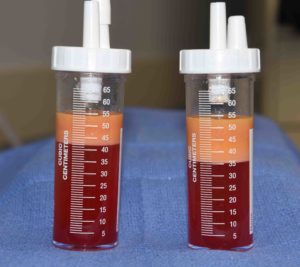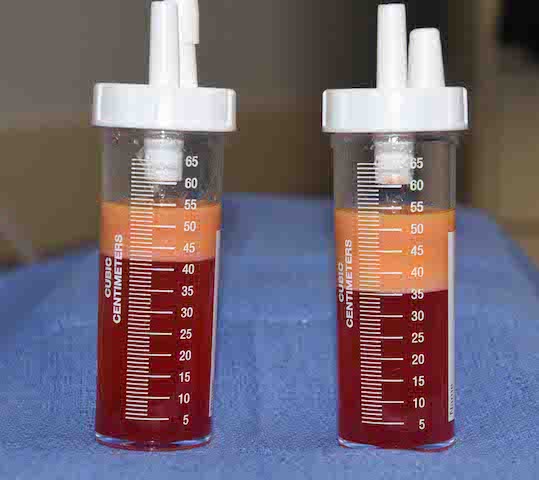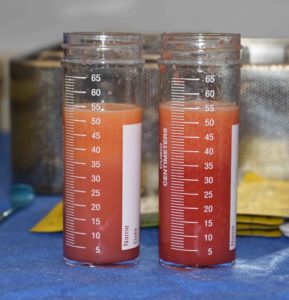Fat grafting of the face is a very common plastic surgery procedure done to add or restore volume for a variety of aesthetic and reconstructive needs. There are a variety of techniques contained within fat grafting that are believed to affect the outcome. (how well the injected fat survives) How the fat is harvested, donor site selection, how the fat is prepared for injection and the injection technique are the four major considerations, all of which have undergone considerable study.
The one fat grafting consideration that has undergone the most investigative research is graft preparation/concentration. Since the fat harvest process introduces extraneous fluid and trauma to the tissues, it is understandable that eliminating these non-essential aspiration components would create a concentrate that is largely cellular . Numerous concentration methods have been advocated of which mechanized centrifugation provides the most rapid and assured separation of the liposuction harvest into usable and nonusable layers.

The key in gravity decantation is time. It takes about 30 minutes for these layers to fully separate. Thus after the harvest other procedures are done awaiting the full decantation process.
Dr. Barry Eppley
Indianapolis, Indiana




